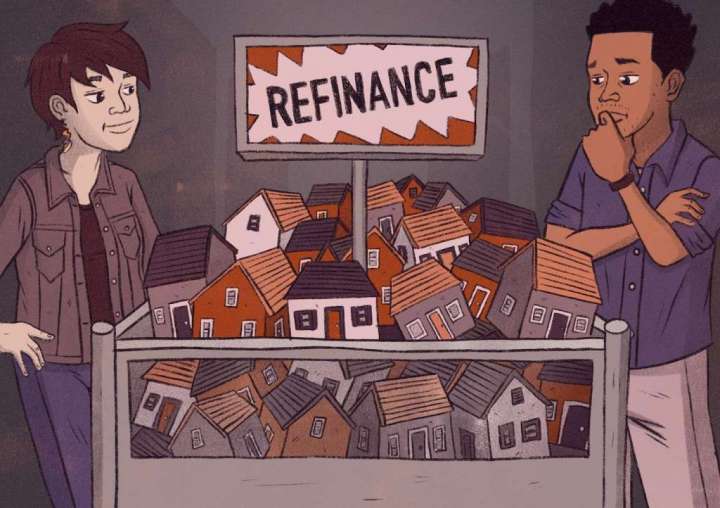After wandering lower the past four weeks, mortgage rates sharply reversed course this week.
Mortgage rates move higher ahead of Federal Reserve meeting

Freddie Mac, the federally chartered mortgage investor, aggregates rates from about 80 lenders across the country to come up with weekly national averages. The survey is based on home purchase mortgages. Rates for refinances may be different. It uses rates for high-quality borrowers with strong credit scores and large down payments. Because of the criteria, these rates are not available to every borrower.
The 15-year fixed-rate average rose to 4.38 percent with an average 0.8 point. It was 4.32 percent a week ago and 2.23 percent a year ago. The five-year adjustable-rate average jumped to 4.12 percent with an average 0.3 point. It was 4.04 percent a week ago and 2.55 percent a year ago.
Mortgage rates mirrored “the rebound in the 10-year Treasury, which crested [at] 3 percent mid-week,” George Ratiu, senior economist and manager of economic research at Realtor.com, wrote in an email. “Investors have their eyes on the Consumer Price Index, expecting to see continued gains but at a moderating pace. The data will be an important measure for the Federal Reserve at its meeting next week. While it is not the central bank’s preferred measure of inflation, it is another metric detailing the health of the economy.”
When the Federal Reserve meets next week, investors are anticipating another increase in the federal funds rate. At its May meeting, the Fed raised its benchmark rate by a half-percentage point, its sharpest rate hike in 22 years. Another half-percentage point increase is on the table this month. The central bank took its first steps toward bringing down inflation in March when it boosted its benchmark rate for the first time since 2018. Although the Fed does not set mortgage rates, its actions influence them.
“As the Fed continues its aggressive activities — rolling off billions from its balance sheet and rate hikes — to slow inflation, mortgage rates will climb higher as a result,” said Ken H. Johnson, real estate economist at Florida Atlantic University.
It is not just the Federal Reserve that is raising interest rates. The European Central Bank announced this week that it will raise its key rate for the first time in 11 years next month in an effort to combat inflation. It also said it would cease its bond-buying program in July.
Although the Fed’s actions are putting upward pressure on mortgage rates, other factors are dragging them down.
“Rates have continued to fluctuate over the past few weeks as volatility persists,” Robert Heck, vice president of mortgage at Morty, an online mortgage marketplace, wrote in an email. “Overall, the current rate environment continues to reflect uncertainty across markets, which in large part is being driven by mixed expectations around inflation, balance sheet reduction and housing supply.”
Bankrate.com, which puts out a weekly mortgage rate trend index, found 86 percent of the experts it surveyed expect rates to rise in the coming week.
“Inflation continues to headline all topics of conversation from gas, energy, food, etc.,” said James Sahnger, mortgage planner at C2 Financial. “Until this is reeled in, higher rates are to be expected. Volatility is also to be expected, so while some days’ rates may be better than others, still expect a higher direction over the summer.”
Meanwhile, mortgage applications continued to dwindle last week, driving down demand to its lowest level in 22 years. The market composite index — a measure of total loan application volume — decreased 6.5 percent from a week earlier, according to Mortgage Bankers Association data.
The refinance index fell 6 percent from the previous week and was 75 percent lower than a year ago. The purchase index dropped 7 percent. The refinance share of mortgage activity accounted for 32.2 percent of applications.
“Higher mortgage rates continue to cool borrower demand for refinances and home purchases, with activity for both falling on a weekly and annual basis,” Bob Broeksmit, MBA’s president and chief executive, wrote in an email. “Prospective homebuyers in most markets are still faced with too few homes for sale in addition to higher home prices and mortgage rates. According to MBA’s Purchase Applications Payment Index, the national median mortgage payment has increased more than $360 since the start of 2022.”
The MBA also released its mortgage credit availability index (MCAI) that showed credit availability decreased in May. The MCAI slid 0.9 percent to 120 last month. A decrease in the MCAI indicates lending standards are tightening, while an increase signals they are loosening.
“Mortgage credit supply declined for the third month in a row to the lowest level since July 2021,” Joel Kan, an MBA economist, said in a statement. “The index remains more than 30 percent below pre-pandemic levels, as credit tightening has occurred in recent months around refinance loan programs. Last month’s tightening was most notable in the government and jumbo segments of the mortgage market. The decrease in government credit was driven mainly by a reduction in streamline refinance programs, as mortgage rates increased sharply through May, slowing refinance activity. Jumbo credit availability, which was starting to see a more meaningful recovery from 2020’s pullback, declined after three months of expansion.”






